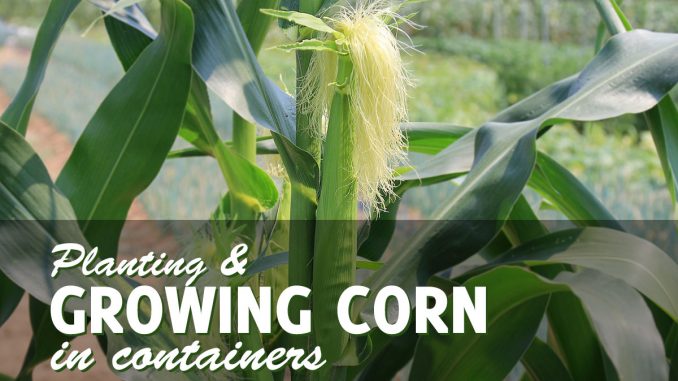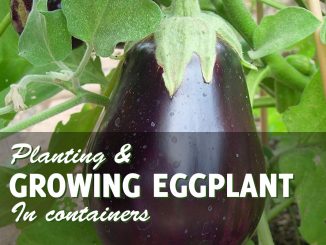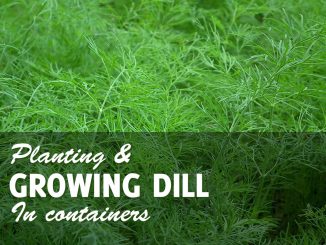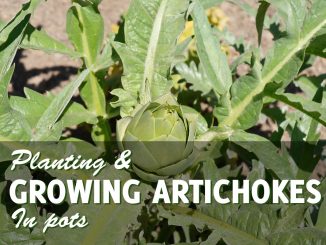
You can still have corn in your garden even though you do not have a large garden or yard. It is easy to start growing corn in a pot or containers, and it can be very rewarding once you see them begin to produce ears. Compared to the standard field and in-ground growing methods, corn cultivated in containers needs extra care and attention as the plants easily get dry, and nutrients can leach out of the containers daily.
Growing Corn in Containers
Starting Your Cultivation
When you start growing corn in pots, choose your variety according to your needs. There are fast-growing varieties that are cultivated to produce instant yield. Other varieties need a lot of time to grow and can try your patience. However, they do say that the best things come to those who wait. These slow-growing varieties are always sure to give you a sweeter ear of corn compared to the fast-growing ones. You can buy your seeds in any local garden store or hardware center. If you want corn that is better tasting and not produced for mass production, I suggest you go to your local farmer’s market and buy your seeds there. Consider the place where you would want to place your crops when growing corn in containers. Corn needs a sunny spot that has protection from gusty winds since they grow quite tall, and it is easy for them to get blown over. Corn needs to get about 6 hours or more of unobstructed sunlight per day. You can place your containers near walls which reflect both heat and sun. The more sun your crop gets, the more chance that your plant will produce good crops.
The Specifications of Your Pot or Container
Choosing a container for growing corn in pots can be tricky. You need a pot that is wide enough to support your plant yet deep enough to hold in roots. A pot that is 24 inches in diameter and in height would be ideal for holding your crops while giving it enough soil to hold moisture and nutrients. Your only concern will be the height of your crops when they reach maturity. Corn can grow up to 7-8 feet tall; add in those extra inches of your pot, and you may need a ladder to harvest your crops.
Preparing Your Soil or Potting Mix
Corn prefers loose and light soil as it has a shallow rooting system. When growing corn in containers, try to aim for your soil having a pH of 6.0-7.0. Incorporate 10-10-10 fertilizer to your soil according to package instructions. Using compost is better as it is all-organic and contains little if any chemicals yet still provides your soil with the necessary nitrogen for your crops. Mix in a good amount of mature compost to nourish your soil. Make sure that the soil is warm enough for your corn to germinate. A temperature of 65F is enough to encourage and speed up this process.
Seeds Selection for Corn in Pots
Identify the seeds that you have bought and make sure that you plant the same variety of corn in each pot. There is a greater risk of cross-pollination when growing corn in pots due to the short spaces between plants. Place the seeds on the soil 4-5 inches apart. You can place as many as four seeds in one container. Cover them with 1 inch of compost or soil and water them down. Once they start to germinate, trim out two seedlings once they reach a height of 4 inches. Remove another plant again when the crops reach 8-10 inches tall. This will help prevent overcrowding that can weaken your plant’s defense against disease.
Care and Harvesting Your Corn Grown in Containers
Maintain your plants by giving them an at least inch of water weekly. Water them twice a day if the weather proves to be too dry. Give your corn an extra help by mulching the surface with paper, wood chips, or moss, this is very important when growing corn in containers. Place your corn in 3 rows with a distance of 5-6 inches from one another rather than in columns to help encourage pollination.
If you are growing different corn varieties, do not place them close to each other. It would be best to place your plants on extreme sides of your garden to prevent cross-pollination. Manual pollination can help your plant produce ears, do this by running fingers along the tassels and collecting the pollen as you go along. Sprinkle the pollen on each silk that you will see at the end of each ear.
To help encourage ear development, feed your corn with 12-15-15 fertilizer every week. For better tasting and healthier crops, you can choose to side dress your corn with mature compost. You can also pour in compost tea to your crops every week to keep them nourished and also to supply them with beneficial bacteria. These cultivated bacteria found in compost tea will help fight disease as well as increase your corn’s resistance.
Aphids can be a problem. You can hose them down with a blast of water before they do any damage to your crops. A grayish-black fungus called smut can also weaken your plants. Remove your crop and destroy it while still young to prevent cross-contamination.
Prevent weeds from growing by regularly and carefully tilling the soil as well as removing any weed that is starting to grow.
Harvesting Corn Grown in Pots
It is time to harvest when the ears have turned into a dark shade of brown. Usually, the corn is ripe for harvesting after three weeks when the tassels have formed on the corn. Check the quality of the kernels. Kernels found on the tips of unhusked ears should have a milky appearance. Test this by pricking a kernel with your thumb. The kernel should be soft pliable. When you see milky juice spurt out of it when you prick it with your finger, your corn is ready for harvesting. Be on the lookout because this can change very fast. To protect your corn, harvest in the morning or in the evening when temperatures are down and cooler.
Growing corn in a pot can be challenging and time-consuming, but that should not deter you from growing the best tasting corn you and your family have ever tasted.




Be the first to comment